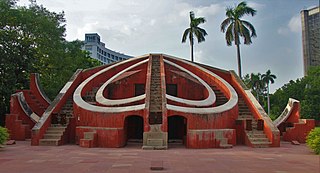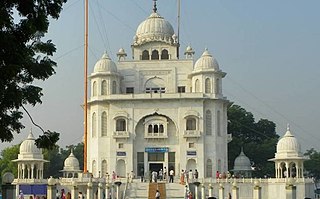Self-guided Sightseeing Tour #1 in New Delhi, India
Legend
Guided Free Walking Tours
Book free guided walking tours in New Delhi.
Guided Sightseeing Tours
Book guided sightseeing tours and activities in New Delhi.
Tour Facts
6 km
119 m
Experience New Delhi in India in a whole new way with our self-guided sightseeing tour. This site not only offers you practical information and insider tips, but also a rich variety of activities and sights you shouldn't miss. Whether you love art and culture, want to explore historical sites or simply want to experience the vibrant atmosphere of a lively city - you'll find everything you need for your personal adventure here.
Activities in New DelhiIndividual Sights in New DelhiSight 1: Agrasen ki Baoli
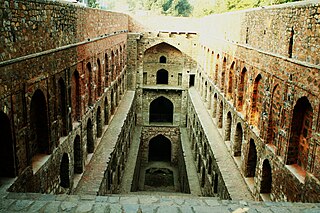
Agrasen Ki Baoli is a 60-meter long and 15-meter wide historical stepwell in New Delhi, India.
Sight 2: Jantar Mantar Astronomical Observatory, Delhi
Jantar Mantar is located in the modern city of New Delhi. "Jantar Mantar" means "instruments for measuring the harmony of the heavens". It consists of 13 architectural astronomy instruments. The site is one of five built by Maharaja Jai Singh II of Jaipur, from 1723 onwards, revising the calendar and astronomical tables. Jai Singh, born in 1688 into a royal Rajput family that ruled the regional kingdom, was born into an era of education that maintained a keen interest in astronomy. There is a plaque fixed on one of the structures in the Jantar Mantar observatory in New Delhi that was placed there in 1910 mistakenly dating the construction of the complex to the year 1710. Later research, though, suggests 1724 as the actual year of construction. Its height is 723 feet (220 m).
Sight 3: Sri Bangla Sahib Gurudwara
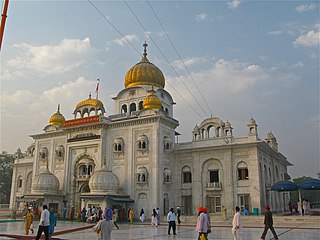
Gurdwara Bangla Sahib is one of the most prominent Sikh gurdwaras, or Sikh house of worship, in Delhi, India, and known for its association with the eighth Sikh Guru, Guru Har Krishan, as well as the holy pond inside its complex, known as the "Sarovar." It was first built as a small shrine by Sikh General Sardar Baghel Singh in 1783, on the bungalow donated by king Raja Jai Singh of Amer, who supervised the construction of nine Sikh shrines in Delhi in the same year, during the reign of Mughal Emperor, Shah Alam II.
Sight 4: Parliament Museum
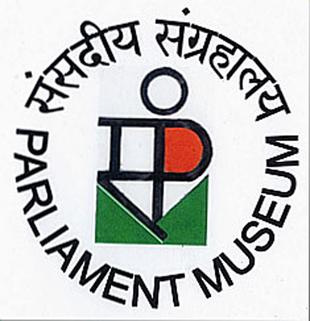
The Parliament Museum is a museum in the Parliament of India Library Building in New Delhi, close to the Sansad Bhavan. It was inaugurated by then Speaker of Lok Sabha on 29 December 1989, in Parliament House Annexe, subsequently it shifted to its present in a Special Hall of the Sansadiya Gyanpeeth, Parliament Library Building, where it was inaugurated on 7 May 2002 by President of India, K. R. Narayanan. The interactive museum was inaugurated by President A.P.J. Abdul Kalam on 15 August 2006.
Sight 5: Gurdwara Rakab Ganj Sahib
The Gurdwara Rakab Ganj Sahib is a historic gurdwara near Parliament House in New Delhi. It was built in 1783, after Sikh military leader Baghel Singh (1730–1802) captured Delhi, on 11 March 1783, and his brief stay in Delhi, led to the construction of several Sikh religious shrines within the city. This one marks the site of cremation of the ninth Sikh Guru, Guru Tegh Bahadur, after his martyrdom in November 1675 for helping Kashmiri Hindu Pandits, under orders of the Islamic Mughal Emperor Aurangzeb. The Gurudwara Sahib is built near old Raisina village near Raisina Hill, at present Pandit Pant Marg, took 12 years to build. Prior to that, a mosque had been built near the spot.
Sight 6: Mahatma Gandhi
The Statue of Mahatma Gandhi is a 16-foot (4.9 m) tall bronze statue of Mohandas Karamchand Gandhi located in the precincts of the Parliament House of India in New Delhi. Designed by Ram V. Sutar, it was inaugurated in 1993, and has become iconic as a site for protest by members of the Indian Parliament.
Wikipedia: Statue of Mahatma Gandhi, Parliament of India (EN)
Share
Disclaimer Please be aware of your surroundings and do not enter private property. We are not liable for any damages that occur during the tours.
GPX-Download For navigation apps and GPS devices you can download the tour as a GPX file.
